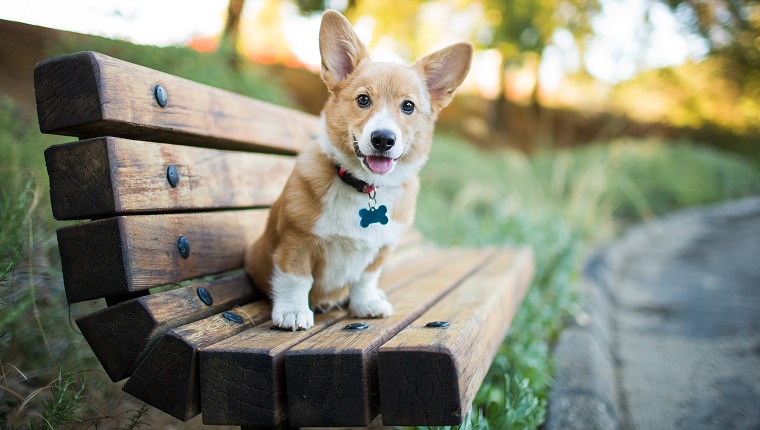The realization is nearly enough to stop your heart: your dog is missing. Someone left a door open, your dog dug a hole under the fence, or the roofer forgot to close the gate. Whatever the reason, it’s not an unusual occurrence.
You can prepare for this frightening possibility by getting an ID tag engraved with your contact information. Many local laws require that dogs wear ID tags, so you might need one to be in compliance.
You can order custom identification tags for your dog online here.
Even if your dog has a microchip, it’s still a good idea for them to have a wearable ID. Someone who finds your dog may not have a chip reader or know where to bring your dog to return them to you quickly. An ID on the collar will help anyone reunite you with your pet.
Here’s everything you need to know about your dog’s ID tags.
What Info Should You Put On Your Dog’s ID Tag?
The only information that absolutely needs to be on your dog’s ID tag is your phone number and your dog’s name.
Beyond that, the choices are endless and may include:
- Your complete address
- Your home city and state but no street address
- An alternate phone number where you can be reached, such as your cell phone number, work number, or landline number
- Any unusual conditions your dog has, such as blindness, deafness, or other disability
You can list whatever makes sense for your situation. Just make sure it’s enough for someone to be able to reach you.
It’s a good idea to check your dog’s tag at least once a year to make sure that it’s still secure. Also check for legibility in case the engraving has worn down so much that you can’t read it.
Where To Get A Dog ID Tag & What To Look For

You can find customizable dog ID tags at almost any pet supply store or get them through your vet offices. Many stores will have machines that can make tags automatically after you supply your information.
You can also order custom dog tags online from many different sites. These sites may have reviews from other pet parents, and you should check them to make sure that you’re buying a tag that will clearly display your info and last for a long time without falling apart.
When it comes to what type of ID tag you should get, you have plenty of options. Here are a few things to consider:
- Material: Most are made of stainless steel, brass, aluminum, or brightly colored plastic. Some are more durable and last longer than others.
- Shapes: They come in basic shapes, such as ovals and rectangles, and whimsical ones, such as dog faces or bones.
- Decorations: You can doll up your baby’s tag with rhinestones, enamel, semiprecious stones, and so on. Or get a tag with an embossed shape on one side (you could have a teddy bear on one side for your 100-pound Bear).
- Custom works of art: If you’re willing to spend the extra money, you can buy custom hand-engraved tags or unique pieces of art.
- Slide-on tag: These tags slide over the collar and have no connectors that can break.
- Lost pet recovery service: Some companies provide their 800 number to list on your dog’s tag instead of your own personal information. Anyone who finds your lost pup will get info when they call the number while the company contacts you regarding your pet’s whereabouts.
Tags typically range in size from approximately three-quarters of an inch to two inches wide. They have to be large enough for someone to be able to read them but also sized for your dog. Yorkies shouldn’t have to drag around two-inch tags, for example.
Ways To Complement Your Dog’s ID Tag
Even if your dog wears a clear, secure ID tag on their collar, they should still have a microchip. This is a small device, about the size of a grain of rice, that your vet inserts under your dog’s skin. It’s a minor injection procedure, and your dog will probably never know it’s there.
The microchip can provide anyone who has a chip reader, such as a vet or emergency services, with your information.
Collars can also be embroidered with your dog’s name and your phone number in case the tag becomes disconnected from the collar. It’s easier to read the larger lettering on a collar than the tiny print on the tag located right below the teeth of a nervous dog.
For a high-tech option, you can find GPS trackers that can you can attach to your dog’s collar. You can use the GPS to track your dog’s location and movements from your computer or mobile phone.
If your dog gets lost or stolen, you’ll be able to to easily track them down — assuming the collar is still around their neck!
What’s your favorite type of dog ID tag to use? Does your dog have any other kinds of ID or a microchip? Post a comment below and let us know!









